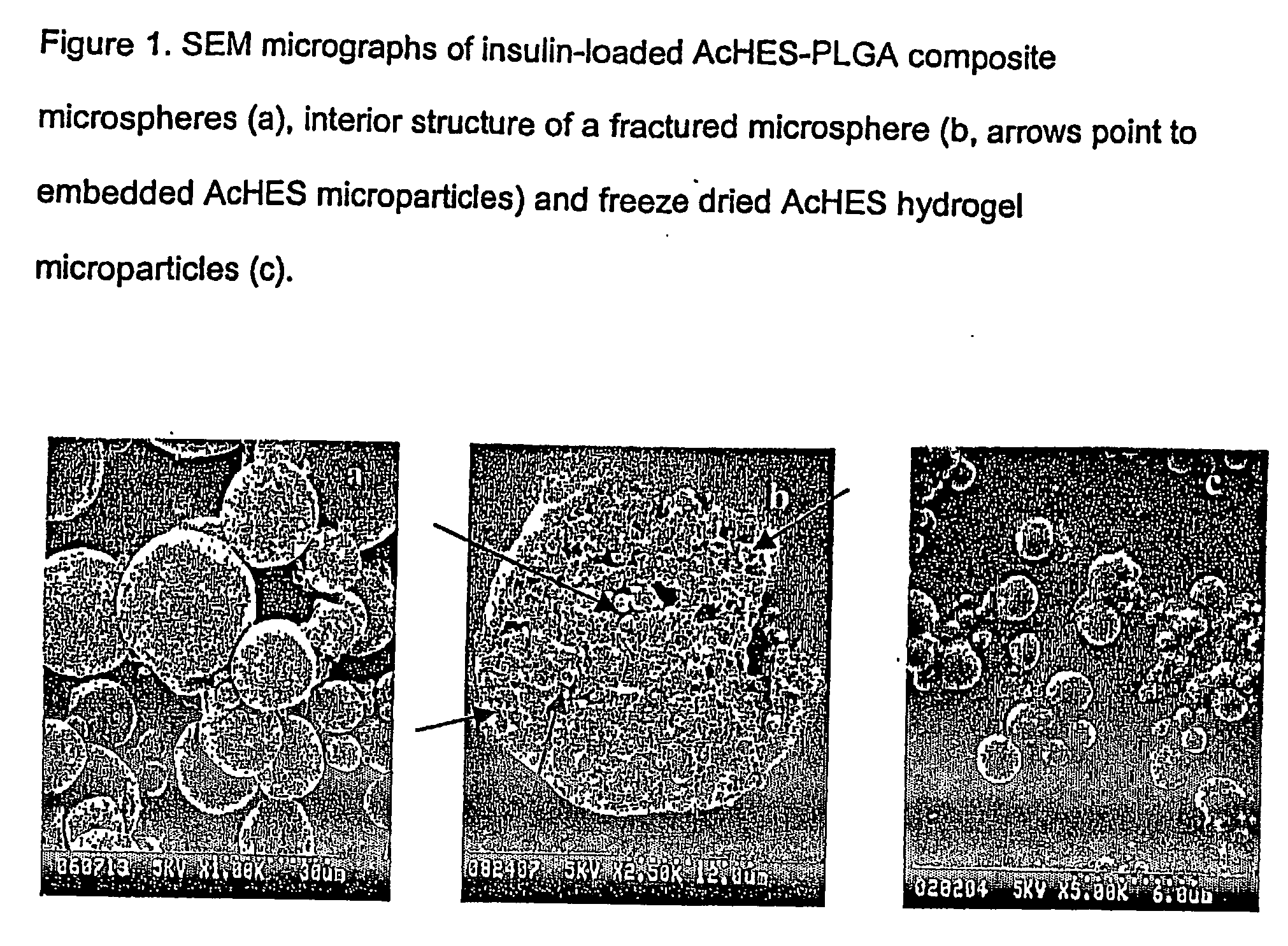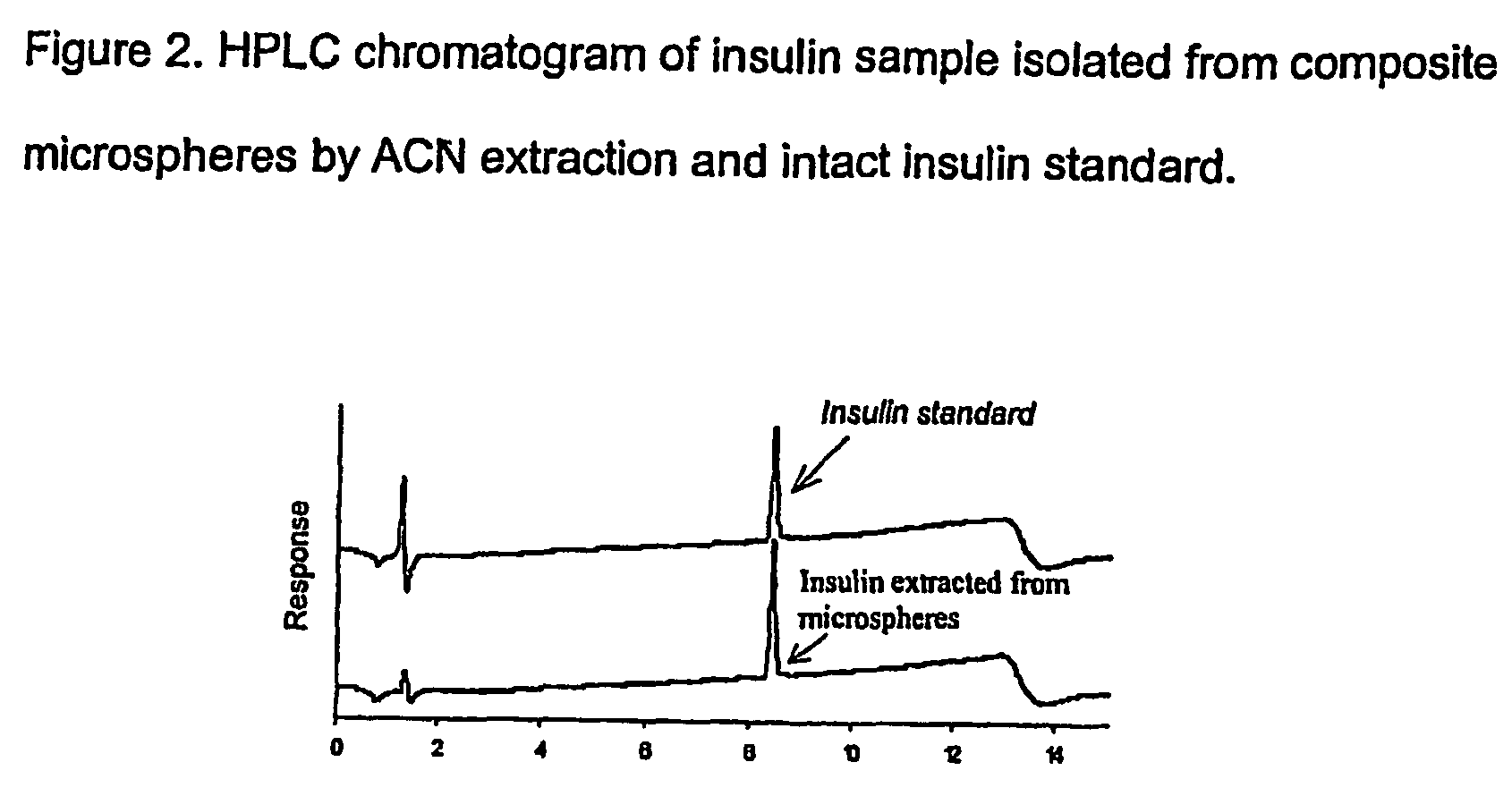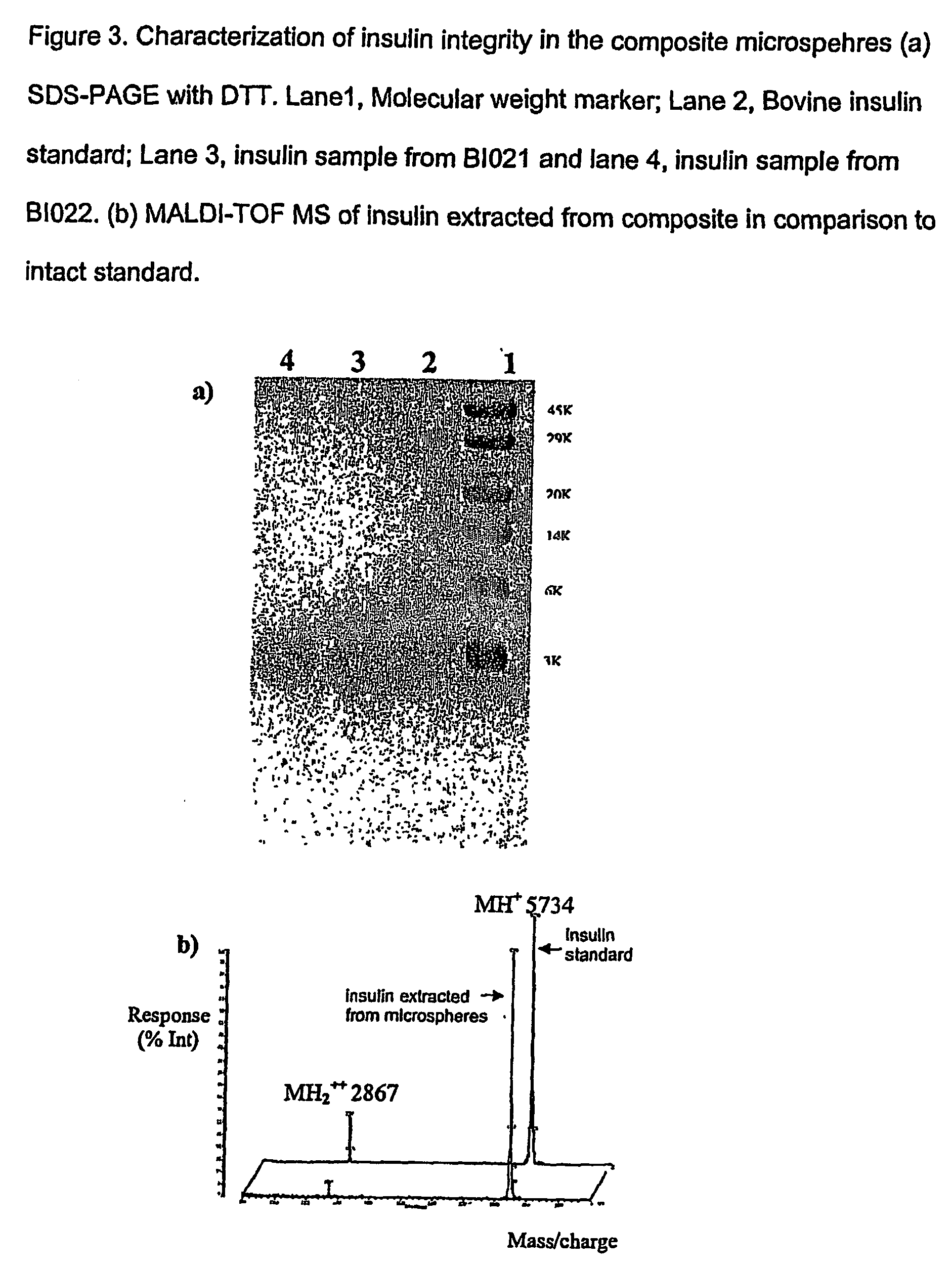(Poly(acryloyl-hydroxyethyl starch)-plga composition microspheres
a technology of composition microspheres and acryloyl hydroxyethyl starch, which is applied in the field of composite microsphere systems, can solve the problems of affecting the delivery of proteins by microspheres, and affecting the stability of proteins by organic solvents
- Summary
- Abstract
- Description
- Claims
- Application Information
AI Technical Summary
Benefits of technology
Problems solved by technology
Method used
Image
Examples
example 1
Preparation and Characterization of Microspheres
[0043] Hydrophilic starch-based hydrogel particles containing model proteins were prepared by a simple swelling procedure. The protein-loaded hydrogel particles were then encapsulated in PLGA microspheres to form a hydrogel-PLGA combined composite microspheres, using a solvent extraction or evaporation method. Bovine serum albumin (BSA) and horseradish peroxidase (HRP) were used as model protein drugs. Physicochemical characteristics and in vitro protein release of microspheres were studied to establish poly(acrylol hydroxyethyl starch)-PLGA (AcHES-PLGA) composite microspheres as a protein delivery system.
[0044] Poly(D,L-lactide-co-glycolide) (PLGA). copolymer ratio of 50:50 (lactic / glycolic; MW 28,000) and Resomer® RG503H were supplied by Boehringer Ingelheim (Ingelheim, Germany). Hydroxyethyl starch was obtained from Dupont Pharmaceuticals (Wilmington, Del.). Acryloyl chloride was purchased from Aldrich Chemicals Company, Inc. (Mil...
example 2
Microsphere System Containing Insulin
[0064] A novel composite microsphere delivery system comprised of poly(D,L-lactide-co-glycolide) (PLGA) and poly(acryloyl hydroxyethyl starch) (AcHES) hydrogel using bovine insulin as a model therapeutic protein was evaluated.
[0065] Insulin was incorporated into AcHES hydrogel microparticles by a swelling technique and then the insulin-containing AcHES microparticles were encapsulated in a PLGA matrix using a solvent extraction / evaporation method. The composite microspheres were characterized for loading efficiency, particle size and in vitro protein release. Protein stability was examined by SDS-PAGE, HPLC and MALDI-TOF MS. The hydrogel dispersion process was optimized to reduce the burst effect of microspheres and avoid hypoglycemic shock in the animal studies in which the serum glucose and insulin levels, as well as animal body weight, were monitored using a diabetic animal model.
[0066] Both the drug incorporation efficiency and the in vitr...
example 3
Preparation of Insulin Loaded Composite Microspheres and Evaluation of Same
Preparation of Insulin Loaded Composite Microspheres
[0068] Insulin loaded AcHES-PLGA composite microspheres were prepared. 50:50 PLGA Resomer RG502H was supplied by Boehringer Ingelheim (Ingelheim, Germany). Hydroxyethyl starch was obtained from Dupont Pharmaceutics (Wilmington, Del.). Acryloyl chloride was purchased from Aldrich Chemicals Company, Inc. (Milwaukee, Wis.). Bovine insulin (BI), polyvinyl alcohol (PVA, Mw 3000-7000), streptozotocin and Infinity™ glucose reagent were obtained from Sigma Chemical Co. (St. Louis, Mo.). The other reagents were of analytical grade. Insulin RIA kits were purchased from Linco Research, Inc (St. Charles, Mo.). Male Sprague Dawley rats were provided by Harlen (Indianapolis, Ind.).
[0069] Acryloyl hydroxyethyl starch (AcHES) was synthesized by esterifying hydroxyethyl starch (HES) with acryloyl chloride. AcHES hydrogel microparticles of around 0.5-2 μm were produced by...
PUM
| Property | Measurement | Unit |
|---|---|---|
| molecular weight | aaaaa | aaaaa |
| size | aaaaa | aaaaa |
| pH | aaaaa | aaaaa |
Abstract
Description
Claims
Application Information
 Login to View More
Login to View More - R&D
- Intellectual Property
- Life Sciences
- Materials
- Tech Scout
- Unparalleled Data Quality
- Higher Quality Content
- 60% Fewer Hallucinations
Browse by: Latest US Patents, China's latest patents, Technical Efficacy Thesaurus, Application Domain, Technology Topic, Popular Technical Reports.
© 2025 PatSnap. All rights reserved.Legal|Privacy policy|Modern Slavery Act Transparency Statement|Sitemap|About US| Contact US: help@patsnap.com



